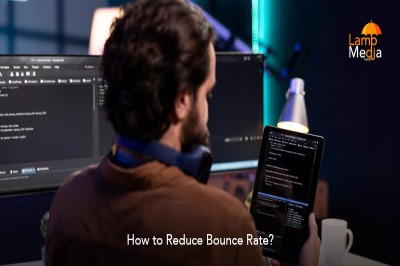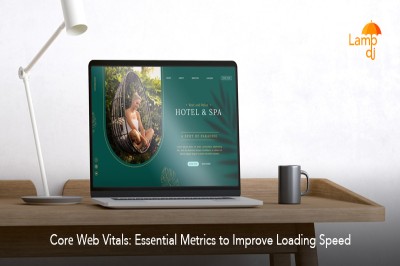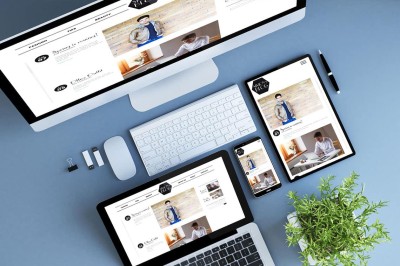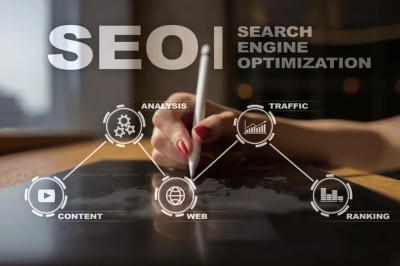How to Use Visual Hierarchy to Enhance Your Web Design

When building a strong website, the design transcends mere aesthetics in importance. It's about the organization of knowledge to direct guests' focus. Here visual hierarchy becomes absolutely vital. Visual hierarchy is the arranging of components such that their importance is indicated. When implemented properly, it enables guests to interact meaningfully with the material on a website and move around it quickly.
We shall discuss the fundamental ideas of visual hierarchy and how you may improve your web design on this blog. Whether you're building your own website or dealing with the best web design company in Dubai, these ideas will guarantee that your design not only looks fantastic but also runs perfectly.
Define visual hierarchy.
Designers arrange website components in visual hierarchy—that is, according to importance. It guarantees that users first naturally concentrate on the most important material and then proceed through the remainder of the content in an understandable manner.
Consider it like to reading a newspaper. Since the headline is the most crucial component, it is large and strong; followed by a subheading, then smaller text for the actual piece. This natural development enables the reader to grasp the material in the correct sequence.
Visual hierarchy rules headlines, buttons, photos, and any dynamic element on a page. It leads the visitor's attention from one area to the next, therefore ensuring a seamless and pleasurable experience.
Essential ideas of visual hierarchy in web design
Knowing and controlling the ideas of visual hierarchy will help viewers of your website to experience it much better. Let's explore some fundamental ideas:
- Measure and Dimensions
An element's size naturally attracts interest. Larger elements catch people more than tiny ones, so one can employ this deliberately to point attention. To indicate its relevance, the main headline should, for instance, be more than the remainder of the material.
To grab attention, similarly, significant action items like "Buy Now" or "Sign Up" buttons should be bigger than other less crucial components. Emphasizing some objects with size helps visitors know where to look and what to do.
- Color and Contrast
Visual hierarchy depends on color in great part. While subdued tones fade into the background, bright, strong colors often catch people's eye. Using opposing colors will help you draw attention to important components as headers, buttons, or calls to action.
If the background of your website is white, for instance, a clear red or blue button will catch people's attention right away and direct them toward the intended action. Conversely, a homogeneous color palette with no contrast will make your site seem flat and boring.
Working with a web design agency Dubai will probably mean dealing with professionals who grasp the subtleties of color theory and how to properly employ contrast in your site design.
- Typography and Font Weight
Visual hierarchy also depends critically on typeography. Various font weights and widths might suggest text's significance. While body text usually runs smaller and lighter in weight, headings should be big and strong.
Furthermore crucial is making sure your fonts are readable on many devices. To keep consistency on one page, keep no more than three distinct font sizes used overall. Whereas paragraph fonts should be straightforward and easy to read, heading fonts can be strong and unique.
Combining typefaces will help to improve readability by matching a sans-serif font—a font lacking short lines at the end of characters—with a serif font—a font containing such lines.
- Whitespace (negative space)
Negative space, or whitespace, is the voids between elements. Though it may seem like a small element, a clean and uncluttered design depends on the careful use of whitespace. Whitespace lets items breathe and facilitates consumers' ability to concentrate on what really matters.
A busy design might overwhelm consumers and make it harder for them to locate what they need. Including lots of whitespace will help you to give important elements more influence. It also makes one look more sophisticated and polished.
Working with the top web design company in Dubai will ensure that the design is aesthetically pleasing while yet effectively delivering the message since they will know how to balance content and whitespace.
- Alignment and Position
Element placement on the page also affects the visual hierarchy. Usually reading a webpage in a "F" pattern, readers start at the top left corner. This implies that the most crucial material should be at the top, where it will be most likely noticed.
Another facet of effective visual hierarchy is correct alignment of pieces. Regular alignment promotes structure and order, therefore enhancing the professionalism and cohesiveness of your website. Items arranged arbitrarily or incorrectly can create a chaotic design that drives consumers away.
6: Imagery and Iconography
Though they are naturally appealing, images and symbols must be employed deliberately within the visual hierarchy. Big, strong pictures can have an instantaneous effect, but if overdone they could overwhelm other important components.
Conversely, icons help to break up text and offer rapid visual clues. An icon of a shopping cart, for example, can instantly tell consumers they are on the e-commerce part of a website. To prevent visual clutter, icons should be used sparingly, though, much as photos.
Using Visual Hierarchy in Your Online Work
After we have addressed the ideas, let us discuss their application. Whether you are working on a web design project yourself or with a Dubai web designer, apply these practical advice:
Starting with a wireframe
Create a wireframe first then start designing. A wireframe is basically your website's blueprint showing where every component will be positioned. This guarantees that the layout is user-friendly from the beginning and helps you to see the hierarchy.
Attend to Your Main Call to Action.
When visitors of your website come in, what should they do? Your main call to action should be the focus point whether you're reading more material, registering for a subscription, or completing a purchase. Set it apart with size, contrast, and positioning.
Employ consistent visual cues.
Web design depends much on consistency. For like elements, make sure you apply the same techniques. To help visitors quickly identify your buttons, for instance, they should all have the same size and color design.
Test and Iterate.
Test your website with actual users after it is operational to observe how the design is used. Heatmaps and other tools allow users to see where they click and the most often emphasized elements. This information will help you to improve the user experience and hone your visual hierarchy.
Conclusion
Creating a good, user-friendly website depends on one mastering visual hierarchy. Using size, color, typeface, spacing, and alignment carefully can help users easily navigate your site and guarantee they interact with your most vital material.
Knowing these ideas will improve your site design and have a long-lasting effect on your visitors whether you are managing your own design project or working with a web design firm in Dubai








































